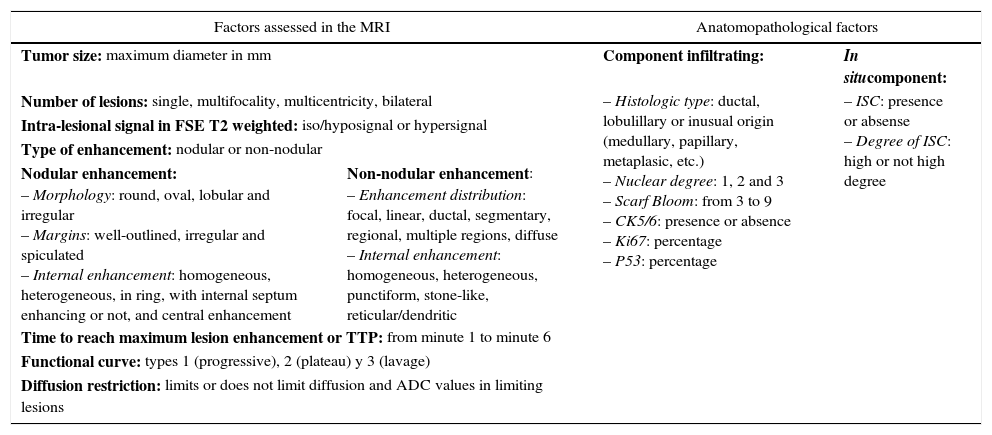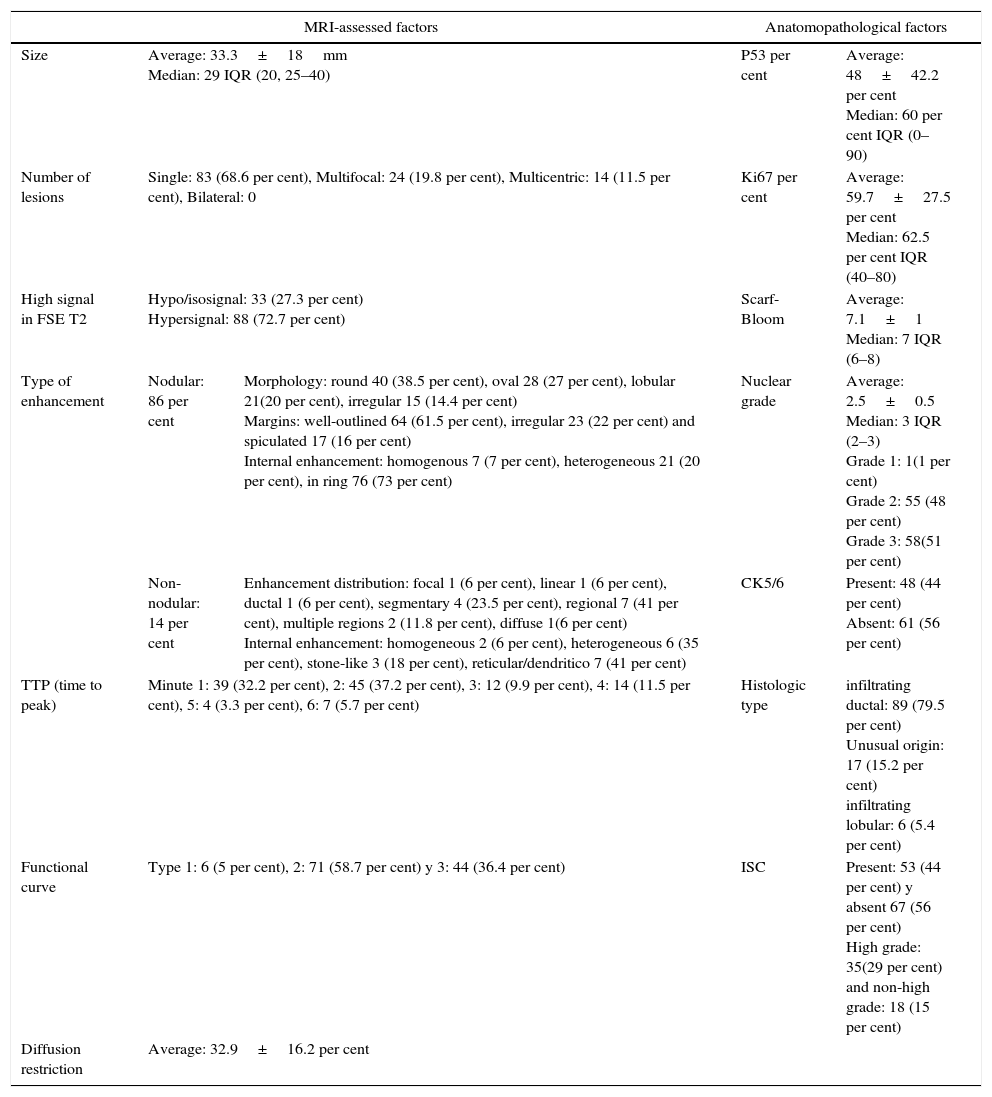To analyze what factors in magnetic resonance imaging (MRI) and histological study of triple-negative breast cancers are related to tumor recurrence and to shorter disease-free survival. To analyze survival and recurrence in function of the presence of an in situ component.
Material and methodsThis was a retrospective study of MRI staging examinations in 122 women with triple-negative breast cancer done from 2007 through 2014. In the MRI, we evaluated morphological variables (size, margins, morphology, internal signal in T2-weighted sequences) and dynamic variables (perfusion and diffusion). In the histological study, we evaluated Ki67, p53, CK5/6, nuclear grade, and Scarff–Bloom grade, as well as the presence of an in situ component and tumor grade (high grade or not high grade). We compared the variables between patients with tumor recurrence and those without, and we conducted a survival analysis.
ResultsNon-nodular enhancement was more common in patients with tumor recurrence (p=0.038) and was associated with shorter disease-free survival (p=0.023). Neither diffusion restriction (p=0.079) nor Ki67 (p=0.052) was associated with a worse prognosis. An in situ component was detected in 44% of triple-negative tumors, and a greater proportion of patients in the group with tumor recurrence had an in situ component; however, the presence of an in situ component was not associated with shorter survival (p=0.185).
ConclusionNon-nodular enhancement was associated with a worse prognosis. Diffusion restriction, Ki67, and the presence of an in situ component were not associated with shorter disease-free survival.
Analizar qué factores valorados en resonancia magnética (RM) y anatomopatológicos de los tumores triple negativo (TN) se relacionan con la recidiva tumoral y con una menor supervivencia libre de enfermedad. Valorar la supervivencia y las recidivas en función de la presencia de componente in situ (CIS).
Material y métodosEstudio retrospectivo de las RM realizadas desde 2007 a 2014, con inclusión de 122 mujeres con cáncer de mama TN y RM de estadificación. En RM se valoraron las características morfológicas (tamaño, márgenes, morfología y señal interna en secuencia T2) y dinámicas (perfusión y difusión). Se estudiaron también los factores anatomopatológicos (Ki67, p53, CK5/6, grado nuclear y Scarff-Bloom) y se analizó la presencia de CIS y el grado tumoral (alto o no alto grado). Se compararon las distintas variables con la presencia de recidiva y se realizó estudio de supervivencia.
ResultadosEl realce no nodular presentó mayor porcentaje en el grupo de recidivas, y la diferencia fue estadísticamente significativa (p=0,038) y se relacionó con una menor supervivencia libre de enfermedad (p=0,023). La restricción a la difusión (p=0,079) y el ki67 (p=0,052) no asociaron un peor pronóstico. Se detectó CIS en el 44% de los TN, con mayor proporción en el grupo de recidiva, sin relación con una menor supervivencia (p=0,185).
ConclusiónEl realce no nodular demostró ser un factor de peor pronóstico. La restricción a la difusión, el ki67 y la presencia de CIS no se asociaron a una menor supervivencia libre de enfermedad.
Artículo
Comprando el artículo el PDF del mismo podrá ser descargado
Precio 19,34 €
Comprar ahora














